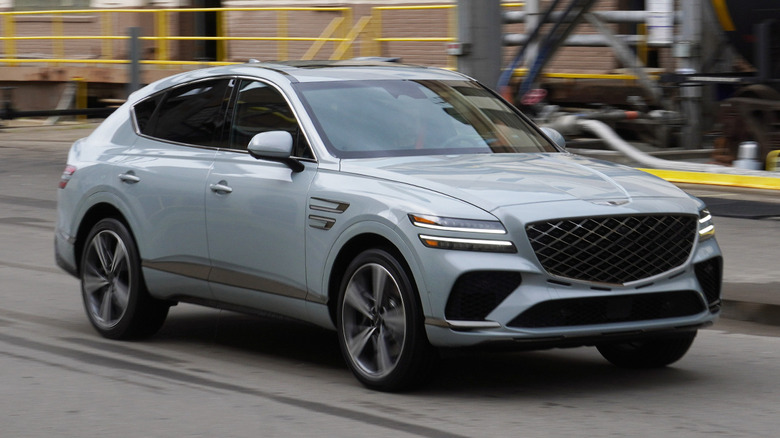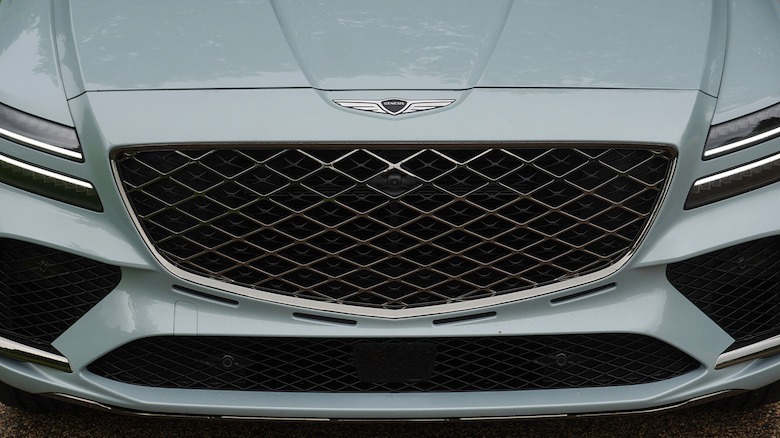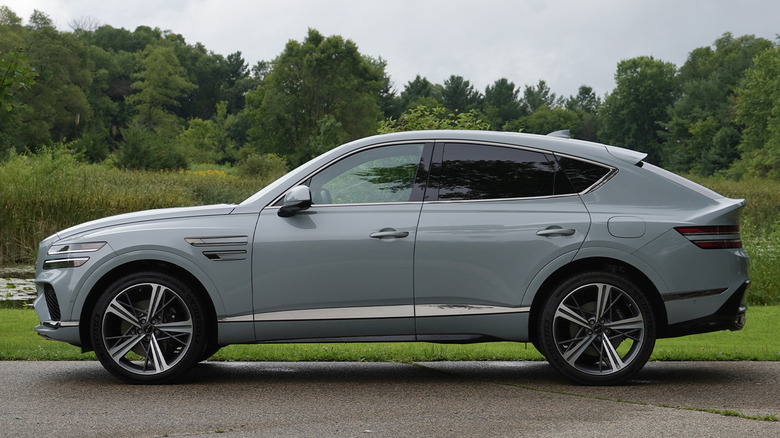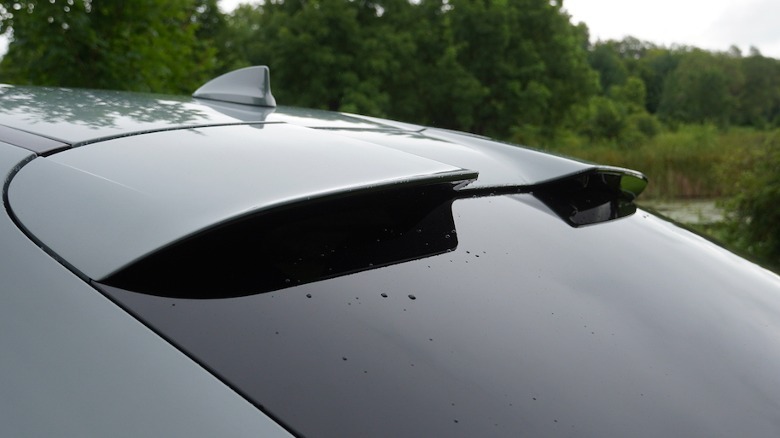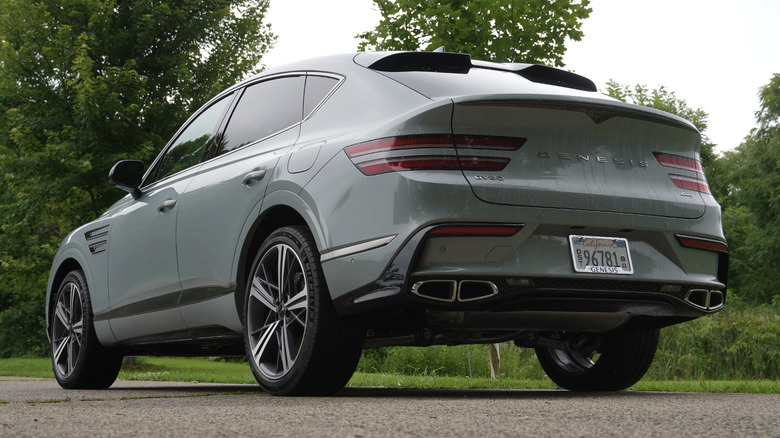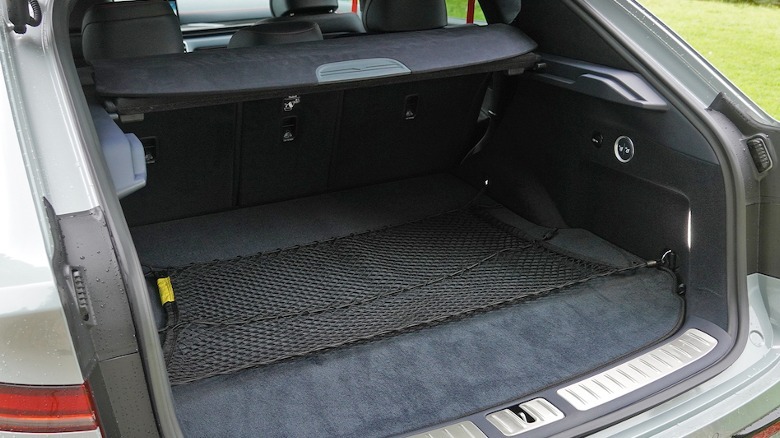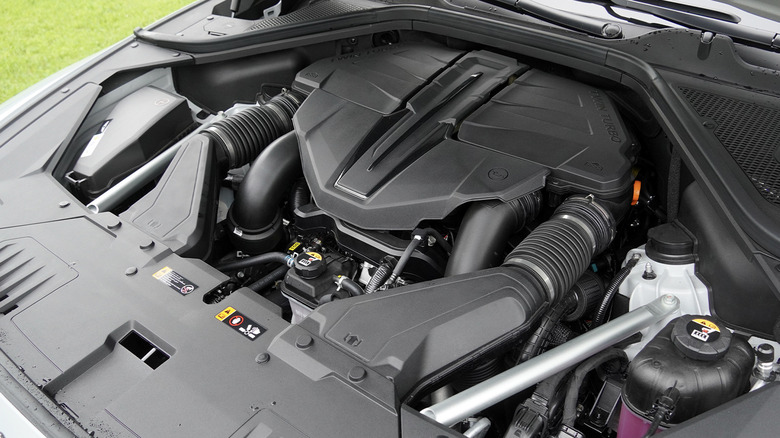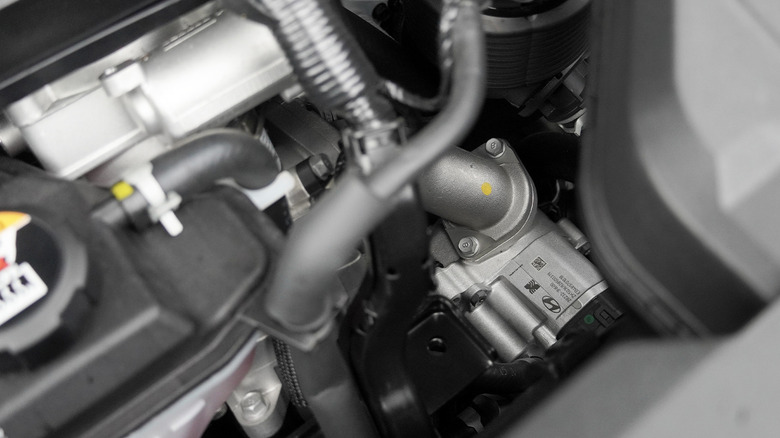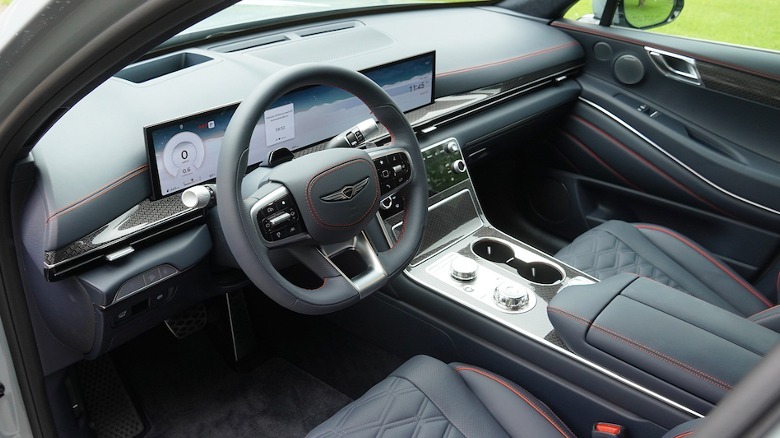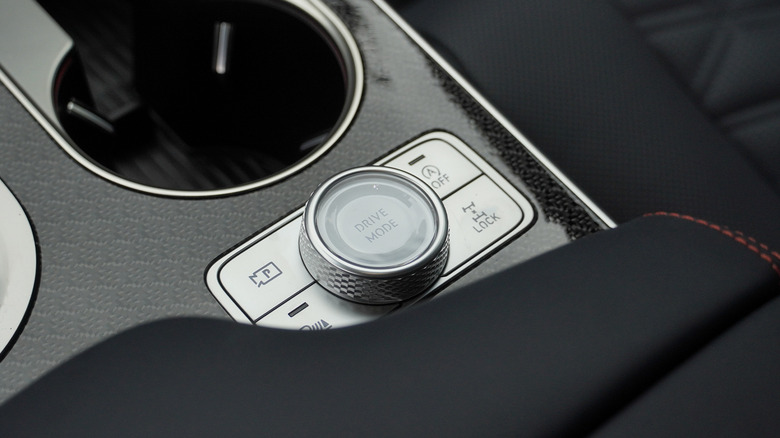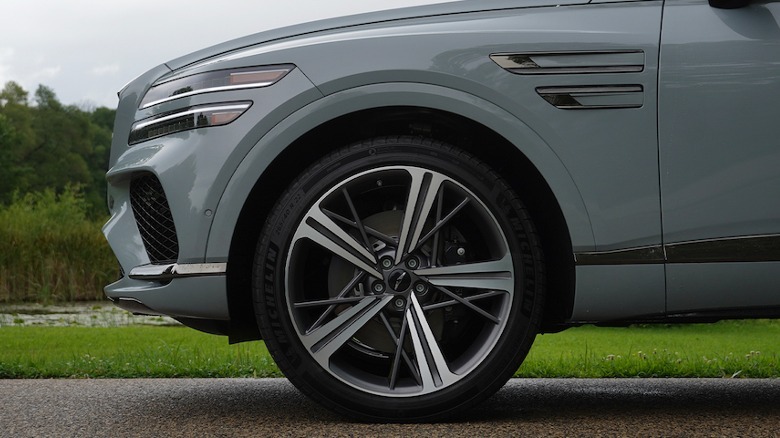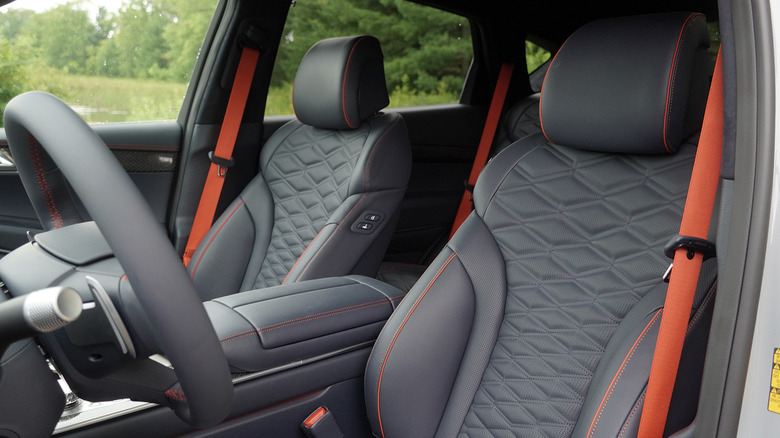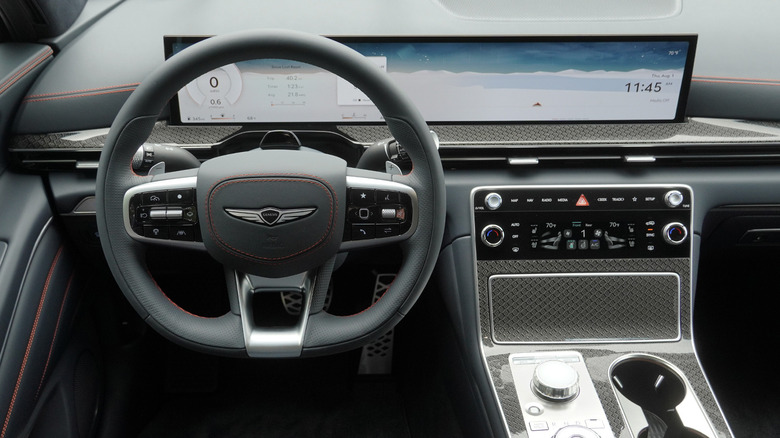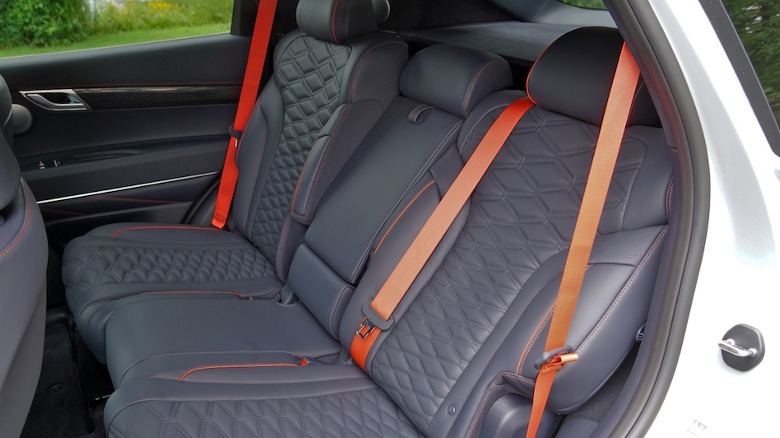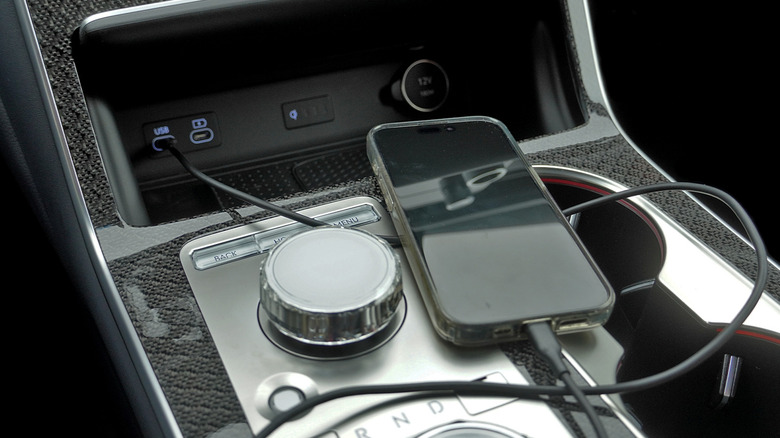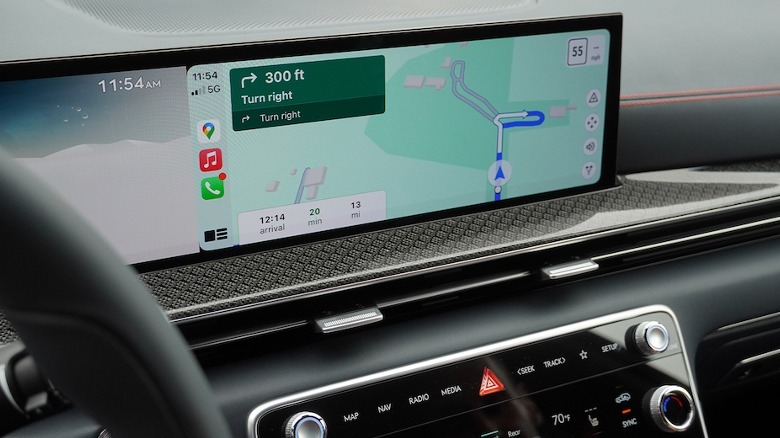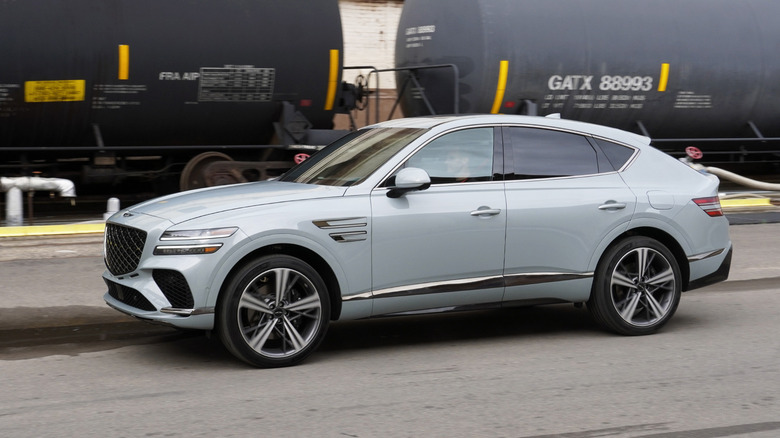2025 Genesis GV80 Coupe First Drive: Coming For You, Cayenne
As a relatively new automotive spinoff brand, Genesis continues to focus on moving onward and upward. Sales figures keep growing, helping public recognition swell, and in my experience, quality continues to improve, as well. I've even heard car people mistake a Genesis for a Bentley or an Aston Martin, perhaps the highest compliment possible.
Last year, I recommended that my uncle, a semi-retired radiologist, buy a GV70 Electrified. As his first EV and first Genesis, after an Equus beforehand, the GV70 required a bit of an adjustment period but so far, he seems absolutely sold on the brand.
Now, the new GV80 Coupe arrives with hopes to take aim at exactly the same market segment, as a sportier and sleeker version of the GV80 SUV. But going from business in the front to party in the back required more than simply a ducktail haircut to the GV80's rear end. Instead, Genesis reworked almost the entire exterior and added upgrades to the interior and tech, while dropping a new powertrain option into a mildly retuned chassis, as well.
From SUV to Coupe
The new GV80 Coupe looked perfectly posed when I pulled up to the modern facade of the Four Season Minneapolis. The sleeker roofline, the defined head and taillights, and the stance fit into the stark environment well. Overall, the Coupe measures only two tenths of an inch shorter than the SUV, and just eight tenths of an inch longer. Yet the new rear fin and longer rear spoiler provide much more presence, even if deleting the SUV's larger rear quarter window does result in something of a massive D-pillar situation.
At the very least, the GV80 Coupe's rear end undeniably looks better than the GV70's strange quarter window, which I always suspected arose as an afterthought in the design process. Not so here—the entire design coalesces quite well otherwise, and subtle revisions to the lower front fascias, grille, and exhaust-diffuser setup also enhance the sporty aesthetic. The throughline from other Genesis models definitely carries over, and engineers in Minneapolis explained that the rear quarter panel's design (and additional weight versus the SUV) came down to additional safety bracing to compensate for scooting critical roll structure components rearward.
Suspension to match sporting aspirations
Doing so allowed Genesis to maximize headroom for the rear occupants despite the lower roofline. The rear seats even recline to a comfortable 40 degrees. Doing so automatically forces the lower seat cushion to move up and forward a bit, but I still fit fine at 6'1" with long legs. Other elements of the luxurious interior, including quilted Nappa leather upholstery and carbon-fiber trim, extend from the front to rear seats, too.
Most importantly, on the absolutely horrendous roads in and around Minneapolis torn up by winter cold and summer heat, the GV80 Coupe glides around almost silently. Extra sound deadening and dual-pane glass contribute to the sensation—or lack thereof—as does an active noise cancellation program in the audio system. Odd sounds pierce the calm only occasionally, such as the loud whining winter tires of a BMW X5 ripping past at about 90 miles per hour or a work truck hauling massive machinery whistling as air passes through at highway speeds.
Specs and stats for each engine option
Revised tuning for the same suspension componentry used on the GV80 SUV also helps to emphasize the Coupe's floatiness, which left me almost in disbelief that we rode on this car's 22-inch wheels and low-profile Michelin Primacy Tour all-season tires. Where other OEMs struggle to balance firmness with compliance in models that attempt to put the Sport back in SUV, this GV80 Coupe absorbs bumps and jarring impacts with aplomb, all without causing excessive body roll when firmed up in the drive modes and pushed hard around corners.
Those 22-inch diamond-cut wheels come standard on the top-spec trim line, which adds an electrically powered "E-supercharger" to the twin-turbo 3.5-liter V6 to produce 409 horsepower and 405 lb-ft of torque. The base model gets 20s along with the traditional twin-turbocharged 3.5-liter V6 good for 375 horsepower and 391 lb-ft of torque.
That E-supercharger previously appeared on the G90 sedan, and essentially forces a bit more air into the throttle body and intake plenum to help reduce turbo lag, aid with emissions, and smooth out acceleration. Fuel economy improves a bit, too, from 16/22/19 MPG for the base GV80 Coupe to 18/22/20 for the blower-equipped version.
A tiny electric blower
With the additional boost, the GV80 Coupe drives quick enough, yet the powertrain still noticeably struggles at times to haul around over 5,000 pounds, requiring some excessive gearshifts from the ZF eight-speed automatic. Playing with paddle shifters on the steering wheel helped, as does stepping up into Sport or Sport+ mode (the latter exclusive to E-supercharger models) but then the suspension and already stiff steering also firm up to a level that makes traversing rougher roads a chore.
The E-supercharger renders one of my favorite sensations, the rush of building turbo boost almost entirely absent. Instead, power builds in a very linear fashion—and yet, no supercharger whine, since the tiny unit sits deep in the engine bay beneath the air intake boots and just behind the radiators. And any such sounds would pale in comparison to the fake engine noises routed into the passenger compartment. Luckily, turning off the soundtrack takes only a few menu dives and actually, the V6 alone doesn't sound too terribly bad (for a V6, anyway, and I can say so as the owner of two V6-powered cars).
We love a locking center diff
Both my V6 cars are actually trucks from the 1990s, and both left the factory with a traditional four-wheel-drive transfer case and a locking center differential. Of course, the GV80 Coupe leaves such prehistoric encumbrances in the past, but I love that Genesis (and Hyundai) keep including an electronically locking center diff controlled by a button on the center console (even if the button is a little awkwardly placed, hiding beneath the armrest).
Otherwise, the GV80 Coupe's torque split biases rearward, but can send up to half to the front tires when needed. And I can confirm that the rear bias helps reduce torque steer in a relatively powerful all-wheel-drive SUV, and when the computer detects a low-traction scenario, the front-end grip definitely makes this Genesis feel surprisingly composed.
At one point, a gravel farm road simply begged for exactly such shenanigans, so I switched Sport+ on (which allegedly turns off traction control) and blasted off the highway. Keeping a mind on the Michelins, I chose a nice wide sweeper without too many ruts or washboards to try out just a bit of extra juice. Sure enough, the tail (ducktail?) stepped out quickly and I managed maybe three quarters of a second of countersteer before the traction control intervened and completely shut down the slide. Not bad for a commuter SUV in the modern era!
Retaining a tach in the digital era
Many of the interior details emphasize those sportier aspirations of Genesis' latest and greatest. Brightly colored seatbelts, contrast stitching, and carbon-fiber trim abound, and though finding how to activate the traditional tachometer in the menu options took a while, the gauge needles then pulse and glow with different colors depending on selected drive modes. I love seeing a boost gauge and engine oil temp in the configurable cluster—though someone asked in earnest whether the target customer base truly cares about seeing the engine's revs on a digital tach. Not necessarily, I believe, but allowing the option helps to enhance the sporting appeal, especially for the twin-charged (sort of) GV80 Coupe that in my desperate imagination carries on the distant legacy of epic 1980s Lancia rally cars (mullet and everything).
The D-shaped steering wheel retains clearly identifiable buttons, for the most part, other than one for swiping between options that requires an adjustment period. But the steering itself creates perhaps the biggest disconnect. Genesis clearly ramped up the steering effort, or reduced the power assist depending on how you look at it, with the goal of a sportier feel. But despite the extra muscle required, no additional precision or feedback returned to my hands, even in Sport+ with the most responsive engine and tightest suspension setting activated.
Dull steering doesn't match the rest of the GV80 Coupe
Pushing hard provides the most communication from the chassis, but the disconcerting dullness of the steering creates the most jarring gap against the GV80 Coupe's competition. I believe that sometimes, an all-wheel-drive car can benefit from lighter steering—though not as light as most Audis these days, obviously.
Genesis reps on hand spent a good amount of time focusing on the parabolic styling lines, dual levels for the revised front grille, and the reclining rear seats that maximize headroom quite efficiently. But I suspect the GV80 Coupe's biggest goal will be boosting potential customer recognition of Genesis as a brand. Overall impressions matter—this sportback-SUV looks and drives better than anticipated, but anyone who already knows about Hyundai, Kia, and Genesis will undoubtedly already expect excellence.
Taking on the (mostly German) competition
Yet the GV80 Coupe also represents a first attempt at going toe-to-toe with the competition in pricing terms, rather than undercutting established luxury brands (especially the Germans). The base twin-turbo V6 package starts at $79,950 but comes more fully featured as an entry model, without a doubt. The package includes a Bang & Olufsen sound system, a digital key, Apple CarPlay (but not wireless for now), panoramic roof, active noise cancellation, and heated and ventilated front and rear seats. The E-supercharger adds $5,800 and the 22s, quad exhaust, darker chrome, interior carbon, alloy pedal caps, and the Sport+ drive mode.
The darker chrome certainly helps but the GV80 Coupe's overall aesthetic leans a little into the showy realm, at least in my opinion. More knurled metal switchgear and knobs instead of sparkling glass might help, and the carbon fiber's gloss finish ends up looking a bit plasticine. On the outside, comps to the Audi Q8 and BMW X6 seem unavoidable—obviously, just about anything looks better than the BMW, but I still give the Audi an angular edge here.
The Porsche Problem
Then we come to the Porsche problem. This Genesis coupe costs almost exactly the same as a base Cayenne, though admittedly without any options. And the E-supercharger version costs almost exactly the same as a Cayenne Coupe. Call me a snob, but I'd take the Porsche every single time, even without the rear ventilated seats or more powerful engine. The Cayenne's single-turbo 3.0-liter V6 simply feels peppier in a straight line, the chassis rides more dynamically at all times, and overall, the entire vehicle tips the scales at 4,678 pounds for the lowest possible curb weight.
Of course, personal preference comes into play and I definitely prefer the understated style of luxury that Porsche tends to nail. Many buyers might prefer more tech and more features to play with at the same price point, and more power on paper.
By now, I can usually make a fairly solid guesstimate about how the market will receive any new car, but my time with the 2025 GV80 Coupe left me legitimately curious to see how the public responds. Even if the badging alone of the Genesis logo contributes to the Aston and Bentley misidentifications, the GV80 Coupe still turned heads while parked outside the Four Seasons in Minneapolis, which definitely counts for something.
